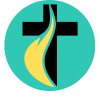No products in the cart.
What is Digital ID 2029: Conspiracy Theory or Revolution
This post contains paid and/or affiliate links. I make a small commission at no extra cost to you. Please see our Privacy Policy.
Digital ID 2029 sounds like something straight out of a sci-fi movie, right? But here we are, watching governments and tech giants push for a global digital identification system that could reshape how we prove who we are.
Some folks are calling it the ultimate tool for convenience and security, while others are stocking up on tinfoil hats and predicting dystopian nightmares. So what’s the real story here?
Let me walk you through this whole digital identity revolution thing, because honestly, it’s way more complicated (and interesting) than your social media feed makes it seem.
What Exactly Is Digital ID?
Before we get into the conspiracy theories and the hype, let’s break down what we’re actually talking about here.
Digital ID is basically your identity stored in digital format—think of it as your driver’s license, passport, and social security card all rolled into one digital package. Instead of carrying physical documents, you’d have everything stored on your phone or in a secure online system.
Governments worldwide are pushing hard for this. The future of digital identity includes things like:
- Biometric verification (fingerprints, face scans, iris recognition)
- Blockchain-based identity systems
- Mobile-first authentication
- Integrated access to government services
Sounds convenient, doesn’t it? And honestly, IMO, it could be. But here’s where things get messy.

The Push Toward 2029
Why 2029 specifically? Well, that’s when several major international initiatives aim to have widespread digital identity systems rolled out globally. The United Nations has sustainable development goals tied to providing legal identity for all by 2030, and many countries are racing to meet that deadline.
Organizations like the World Economic Forum and various governments have been championing digital ID programs. India’s already done it with their Aadhaar system, covering over a billion people. Estonia’s been running digital identities for years. The EU is working on their digital wallet initiative.
The momentum is real, and it’s picking up speed fast. Also, let’s be honest—COVID-19 basically turbo-charged these efforts. Digital health passes and vaccine certificates gave governments a crash course in digital identity systems.
The Revolutionary Side: Why People Are Excited
Okay, so let’s look at why this isn’t necessarily the apocalypse scenario some people paint it as.
Convenience That Actually Makes Sense
Ever spent two hours at the DMV just to update your address? Yeah, me too. A digital identity revolution could eliminate that nonsense entirely. Imagine updating your info once and having it automatically sync across all relevant government agencies. No more filling out the same form seventeen times.
First, you’d have instant verification for everything from opening bank accounts to applying for jobs. Next, you could access government services from your couch instead of standing in soul-crushing lines.
Finally, you’d reduce the risk of losing important documents (because let’s face it, we’ve all misplaced our social security card at least once).

Financial Inclusion
Here’s something that doesn’t get talked about enough: billions of people worldwide lack official identification. This locks them out of banking systems, healthcare, and legal protections.
Digital ID could change that. A farmer in rural Africa with just a smartphone could suddenly access financial services, prove land ownership, and participate in the formal economy. That’s not dystopian—that’s potentially life-changing for a huge chunk of humanity.
Enhanced Security (Theoretically)
Physical IDs are laughably easy to fake or steal. I knew a guy in college who had three fake IDs, and none of them were particularly impressive 🙂
Digital ID and government control concerns aside, biometric verification is way harder to fake than a laminated card with your photo. The technology and privacy 2029 systems are developing could actually make identity theft significantly harder.
The Conspiracy Theory Side: Why People Are Freaking Out
Now let’s get into why half the internet thinks this is the beginning of Big Brother’s wet dream.
The Surveillance State Nightmare
Here’s the thing that keeps privacy advocates up at night: digital ID conspiracy theories aren’t entirely baseless. A centralized digital identity system gives governments unprecedented ability to track and monitor citizens.
Think about it. If every transaction, movement, and interaction requires digital verification, suddenly the government has a complete record of your entire life. Where you go, what you buy, who you meet with—everything.
China’s social credit system is the poster child for how this could go horribly wrong. Combine digital ID with surveillance cameras and AI, and you’ve got a recipe for authoritarian control that would make Orwell nervous.

The “Off Switch” Problem
This is the part that legitimately concerns me. If your entire identity exists digitally, what happens when the system decides you don’t?
Get on the wrong side of the authorities? Boom—your digital ID gets suspended. Can’t access your bank account. Can’t travel. Can’t prove you exist. You’re effectively erased from society with the click of a button.
We’ve already seen glimpses of this during COVID lockdowns and with debanking incidents. A global digital identification system amplifies this risk exponentially.
Data Breaches and Hacking
FYI, governments aren’t exactly known for their stellar cybersecurity. Remember when Equifax leaked basically everyone’s personal information? Now imagine that, but with your entire legal identity.
One major breach could expose billions of people’s biometric data, and here’s the kicker—you can change your password, but you can’t change your fingerprints or face. Once that data is compromised, it’s game over.
Corporate Control and Profit
Let’s not pretend this is just about government efficiency. Tech companies are salivating over the prospect of digital ID systems because it means more data, more control, and more profit.
When private corporations start managing your digital identity—as many proposals suggest—you’re basically handing them the keys to your entire existence. And corporations aren’t exactly known for putting user welfare above shareholder returns.
The Middle Ground: What’s Actually Likely
Okay, so here’s my take after looking at this from every angle. The truth probably sits somewhere between “revolutionary freedom tool” and “totalitarian control mechanism.”
It’s Happening Whether We Like It or Not
The momentum behind Digital ID 2029 initiatives is massive. Too many powerful entities have too much invested in making this happen. However, the implementation will vary wildly by country.
Democratic nations with strong privacy protections will probably create systems with safeguards and oversight. Authoritarian regimes will absolutely weaponize these systems for control. Therefore, where you live will determine whether digital ID is a convenience or a threat.
The Implementation Matters More Than the Concept
Digital ID isn’t inherently good or evil—it’s a tool. The question is how it’s designed and who controls it.
Decentralized systems where individuals control their own data are very different from centralized databases controlled by governments. Blockchain-based solutions could potentially offer the benefits of digital ID without the surveillance nightmare.
But here’s the problem: governments want centralized control, and most citizens don’t understand the technical differences enough to demand better alternatives.
We Need to Pay Attention and Push Back
The worst-case scenario isn’t that digital ID happens—it’s that it happens without adequate safeguards because everyone was either too distracted or too trusting.
We need:
- Strong encryption and data protection laws
- Transparent systems with public oversight
- Mandatory audit trails
- Easy opt-out provisions for non-essential services
- Severe penalties for misuse
But let’s be real—these protections only happen if enough people actually care and demand them. And right now? Most people are more worried about their next Netflix binge than their digital identity rights.
So What Should You Actually Do?
Look, I’m not going to tell you to move to a remote cabin and live off the grid (though if that’s your thing, cool). But here are some practical steps:
First, educate yourself about what’s happening in your country. Different nations are at different stages of digital ID implementation. Know what’s coming.
Next, protect your biometric data. Be selective about where you give your fingerprints or face scans. Once that data exists in a database somewhere, you can’t take it back.
Also, use strong, unique passwords and enable two-factor authentication everywhere. As digital identity systems roll out, your existing accounts become even more valuable targets.
Finally, support organizations fighting for digital privacy rights. Groups like the Electronic Frontier Foundation actually push back against overreach. Consequently, they need public support to be effective.
On the other hand, don’t let paranoia completely derail your life. Not every new technology is a conspiracy, and burying your head in the sand doesn’t help either.
The Bottom Line
Digital ID 2029 isn’t just coming—it’s practically already here. Parts of it look genuinely useful, and parts of it are legitimately terrifying. It’s both a potential revolution in convenience and a potential tool for unprecedented control.
The conspiracy theorists aren’t entirely wrong, but neither are the optimists. The real story is more complicated and more boring than either extreme wants to admit.
What matters now is staying informed, demanding accountability, and pushing for systems that prioritize individual rights over convenience or control. Because once these systems are in place, rolling them back will be nearly impossible.
So yeah, technology and privacy 2029 is going to be interesting, to say the least. We’re all along for this ride, whether we signed up for it or not. The only question is whether we’re paying attention enough to influence how it unfolds :/
Stay skeptical, stay informed, and maybe keep a paper backup of important documents just in case. You know, for the apocalypse or whatever.
FAQ
What is a Digital ID and how does it work?
A Digital ID is an electronic version of your personal identification—like your passport, driver’s license, or social security card—stored securely online or on your mobile device.
It uses biometrics, encryption, and blockchain technology to verify your identity across digital platforms, allowing easier access to government and financial services.
Why are governments pushing for Digital ID by 2029?
Many governments aim to achieve universal digital identity by 2029 to improve efficiency, prevent fraud, and support the UN’s 2030 goal of providing legal identity for all.
Countries like India, Estonia, and members of the EU are leading this push through national and international digital ID programs.
What are the main concerns about Digital ID systems?
Critics fear privacy violations, data breaches, and government overreach. A centralized system could enable mass surveillance or even allow authorities to restrict access to services by “turning off” someone’s digital identity. These concerns fuel ongoing digital ID conspiracy theories worldwide.
How can people protect their privacy in a Digital ID future?
Stay informed about how your country plans to implement digital identity. Use strong passwords, two-factor authentication, and be cautious with biometric data sharing. Advocate for transparent, decentralized systems and robust data protection laws to keep personal information safe in the digital era.














